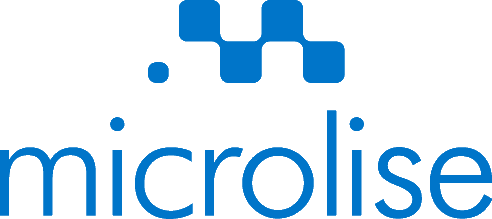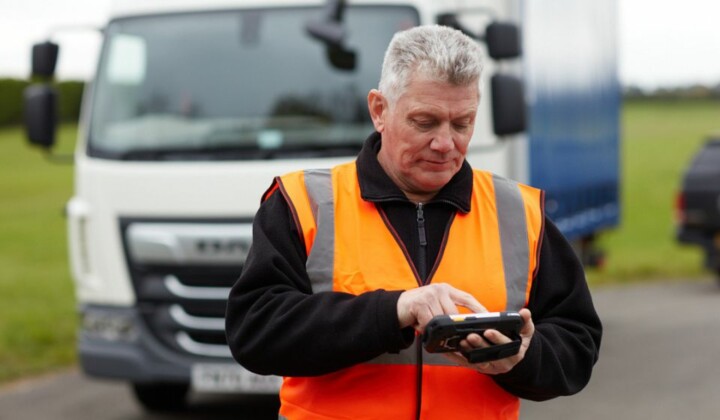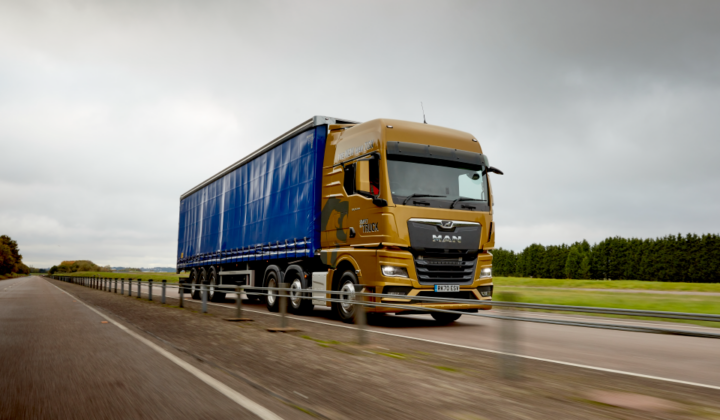A transport management system can transform your business for the better, which is why most logistics and haulage operators already have one.
However, there are significant differences in what those systems do, how they benefit a business, and what return on investment they deliver. On top of that, if you have an older system, it has probably been surpassed by almost every modern platform on the market.

You wouldn’t try to run your business using outdated vehicles, computers, or mobile phones, as they’d all hamper profitability and growth. So, why run it on an outdated TMS? There has never been a better time to review your TMS and ask yourself, “is it time for a change?”
What is a TMS?
A Transport Management System – sometimes called transport management software – is a digital platform that has been used for decades to improve the movement of goods. Early iterations focused on better transport planning and providing digital archives of records to help with both compliance and customer queries.
As the technology has evolved, TMS is now able to positively impact every aspect of road transport operations, from planning through to proof of delivery. In addition, it can now provide real time data as well as deeper dives through reports and analytics – all powerful tools in maintaining a competitive edge.
While almost all TMS’ will share some common traits in terms of functionality, there are also vast differences. If you haven’t benchmarked your TMS recently, now is the time to look at what it does compared to what a modern system can do.
Find out more about what a transport management system is, and everything else you may need to know.
12 signs you need to change your TMS
If you’re benchmarking your TMS, here are 12 signs that your legacy system is past its best:
1. I can’t integrate my TMS with other platforms:
A good TMS will integrate with almost any other modern system, via API. In many cases, the developer will already have done the work to integrate their TMS with platforms like a Warehouse Management System (WMS), ERP solution, or accounting software. If your TMS does not integrate with other digital platforms, it means data is in different places and you’re probably wasting time trying to find it.
2. I’m concerned about cyber security for my TMS:
If your supplier is not providing regular security updates, your TMS could be at risk of a cyber-attack.
3. It’s hard for my TMS to respond to changes in real time:
Any TMS worth its salt is good at transport planning – but the best laid plans often change once you start implementing them. If your TMS can’t deal with traffic congestion, road closures or changing customer needs, then it’s not doing its job. You need a system that can quickly respond while still delivering an updated plan that is as efficient and effective as possible.
4. My customers are demanding information that our TMS can’t provide:
Increasingly, customers expect better visibility and tracking of loads, and more accurate ETAs. If your TMS can’t give you that information at your fingertips – or even enable your clients to log in via a portal to see it – then you need a new TMS.
5. I can’t make informed decisions in real time:
Today’s Transport Operator has to be able to react quickly to challenges and make snap decisions on the best way to deal with them. If your TMS doesn’t give you the data you need to make informed decisions, then you are putting client relationships and your company’s reputation at risk.
6. It’s difficult for us to scale up our TMS:
A system designed to support your business 10 years ago is probably not meeting the more complex needs of your business today. If you’re spending a lot of time and money asking the developer to reconfigure the platform, think about getting a more flexible TMS. Modern systems are often modular and are paid for using the SaaS model, so it’s easy to scale up or down in line with changing business needs.
7. I’m struggling to keep a lid on costs:
The industry has experienced incredible inflationary pressures recently. If you’re struggling to maintain profitability, look at whether a modern TMS can improve productivity while also cutting costs.
8. My TMS doesn’t enable working remotely:
Older systems were installed on company servers, meaning you had to be on the premises to access them. A modern TMS is based in the cloud, meaning you can access it from anywhere. The rise of working from home or remotely is simply not compatible with a legacy TMS.
9. Customer support for my TMS is not good enough:
Users of cloud-based TMS typically encounter fewer issues as the provider is responsible for regularly maintaining and updating the platform. However, customer service from TMS providers can vary wildly. If you’re dissatisfied with the level of support you get from your current supplier, look for one with a proven track record in customer care.
10. My TMS doesn’t help me resolve customer disputes:
If your customers are disputing delivery times or even if they happened at all, can you quickly resolve these confrontations? A modern TMS integrates with electronic proof of delivery, helping to avoid all these issues.
11. My TMS doesn’t do enough to promote road safety:
Today’s TMS can include driver behaviour monitoring and telematics, helping you to further embed a culture of road safety and compliance control.
12. I’m not getting good data analytics from my TMS:
A modern TMS is not just about planning and executing transport operations – it should also help you identify areas for improvement. If your TMS doesn’t have data analytics and reporting capabilities, you are missing out.
Where can I learn more about TMS?
A modern, flexible TMS will enable your business to expand rather than restrict your growth.
Microlise has produced a definitive guide to TMS to help you find the right system for your business. You can download the guide for free below.




